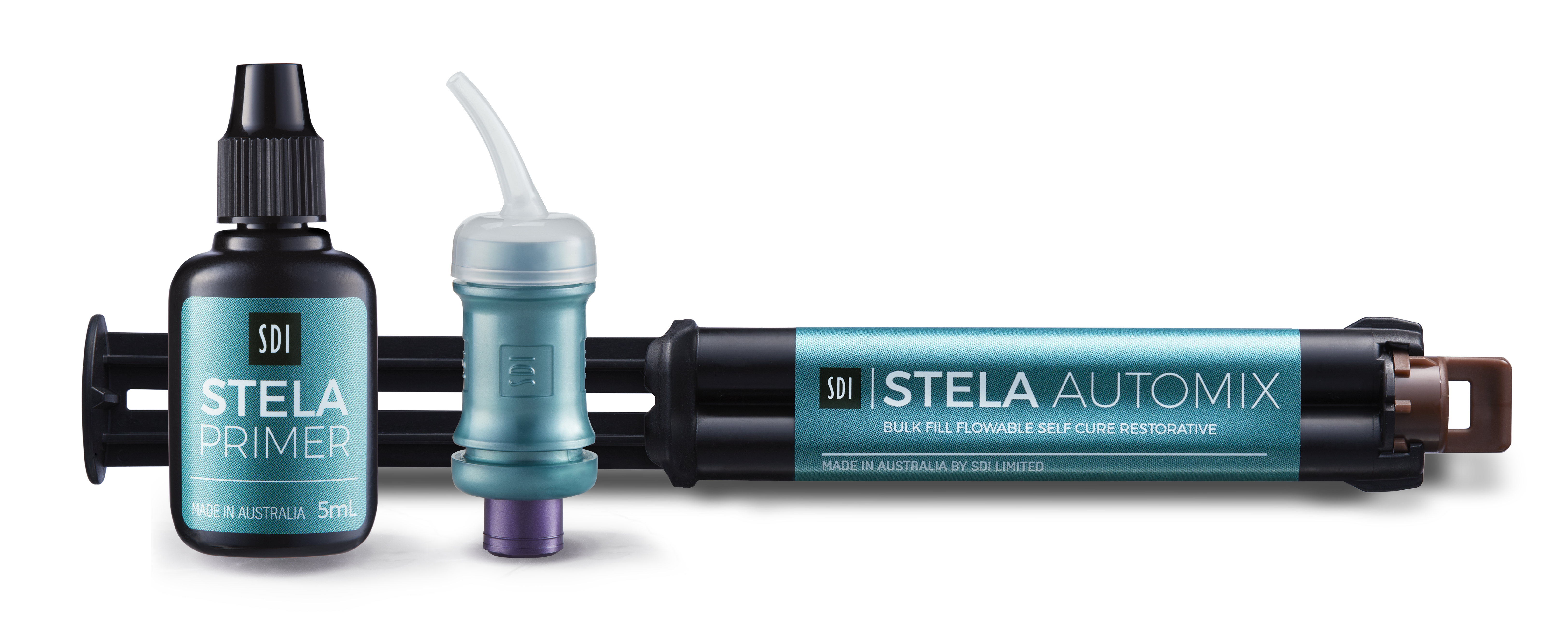SDI has unveiled its latest breakthrough in dental restorative materials: Stela, a high-performance self-cure composite. Developed through a collaboration between SDI scientists and engineers from three leading Australian universities, Stela represents a significant advancement in dental technology. This new flowable composite is specifically designed for Class I, II, III, and V restorations, offering enhanced performance and ease of use.

A standout feature of Stela is its unique curing process. Unlike traditional light-cured composites, which cure from the occlusal surface, Stela utilizes a self-cure mechanism initiated by a special catalyst in the Stela Primer. This innovative approach begins the polymerization process at the restoration interface, effectively lowering stress and ensuring a gap-free interface. The result is a significant reduction in postoperative sensitivity and a lower risk of premature failure.
One of the most notable benefits of Stela is its ability to provide an unlimited depth of cure with minimal polymerization stress. This characteristic is particularly powerful for complex restorations, where consistent and thorough curing is essential. The application process for Stela is also very efficient. It involves just two simple steps: applying the primer and then the composite. This method allows for restorations to be ready for placement in just 15 seconds, a stark contrast to the up to 120 seconds required by traditional composite systems.
The launch of Stela marks a significant milestone in restorative dentistry and offers a reliable and efficient solution for dental professionals. By combining cutting-edge research with practical application, SDI has created a product that not only improves the quality of dental restorations but also enhances the overall patient experience. SDI continues to lead the way in dental innovation, setting new standards for performance and reliability in restorative materials.



